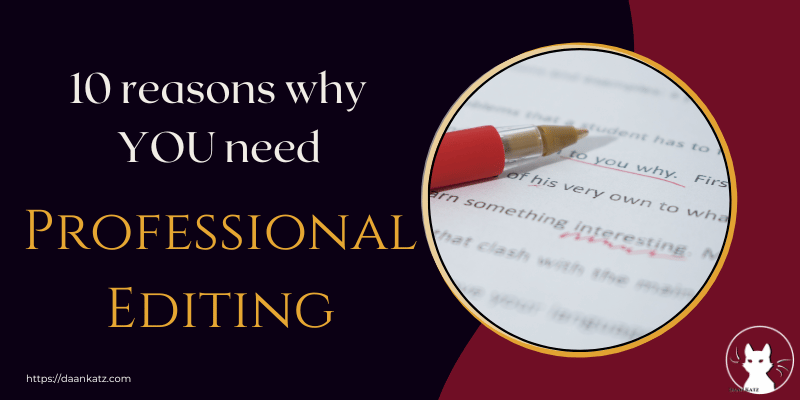Awesome characters with disabilities in fiction: Where are they?
I’m so tired of it. I want to see real, relatable characters with disabilities in fiction. The more the merrier. Unfortunately, most fiction either treats us as if we don’t exist at all, or turn us into deeply tragic characters.
But since you are here, reading this blog post, I’m going to assume you want to help change the tide. You want to learn how to write awesome characters with disabilities. Kudos! I’m here to help you.
In a previous post I explained how to fail spectacularly at writing disabled characters and I also gave you some tips on how to avoid these pitfalls. Today, I give you seven easy steps to help you write the best, the awesomest, the most arse-kicking characters with disabilities. And don’t let anyone tell you that you can’t!
Table of Contents
Step 1: Write Real People
Write real people. This is the first and most important “rule” here. We are not all that different from others. We share the same basic human emotions and the same basic physical needs. Food and drink, sleep, protection from the elements, love, and—gasp!—sex.
Yes. Let me repeat that: S-E-X. We’re no robots, but warm-blooded human beings.
Portraying characters with disabilities as real people (just like any other character), helps the reader feel connected to your disabled character. It helps the reader empathise and understand. This is crucially important. If your reader can’t connect to your character, you’ve got a problem. And the size of this problem is directly proportional to the role your disabled character plays in your story.
Step 2: Do Your Research
“But, Mr Katz, I’m not disabled,” I hear you say.
Let me assure you, you don’t need to be disabled to be able to write realistic characters with disabilities. If you are a human (I know, not all authors qualify for that moniker; in fact, I doubt I do 😉 ), and if you have human emotions, that’s a great start. Add to that an open mind and a willingness to learn, and you’re already halfway there.
Do you know the pain of loss, to the despair of feeling like you’ll never be able to reach your goals? Have you ever experienced physical pain, or a minor bodily trauma? These are experiences and emotions that can really help you add depth to your character building. They are your foundational building blocks.
Walk a mile in our shoes
Now walk a mile in our shoes. Under the old adage “write what you know”, try living for a while with the disability you intend to give your character. A month or two should suffice. And no, I’m NOT kidding.
For me, as a disabled author, writing characters with disabilities is a no-brainer. In fact, I already wrote them before I knew I had a few invisible disabilities. I simply injected my own experiences into my characters, and never thought much about it.
Things changed when I became undeniably visibly disabled. That’s when I started to look at disability with different eyes, and learnt that disability comes in many different forms and flavours; and that probably most disabilities are invisible.
This was how wheelchair dependent cantor Beldenka Nadinov came into my life and demanded that I write her story. You can read it in my debut novel Night’s Reign, where she partners with autistic priest Niels Bosch to fight a great evil.

Step 3: Avoid Stereotypes and Clichés
Really, for the love of all you hold sacred, DO NOT turn us into Token Disabled Characters. They suck! Worse than that, they perpetuate harmful stereotypes that really need to die.
These are the worst culprits:
- The Inspirational Cripple
- The Dependent Sidekick
- The Disabled Martyr
- The Superpowered Disabled
Also, let’s not forget about the Tragic Disabled Character who only wants to die. (I think I’ll go puke now…)
You can read more about all of these in my blog post “How to Fail at Writing Disabled Characters”.
Give us agency. Those of us who are in full possession of their mental faculties (most of us!) are strong, capable people. Like Beldenka, Niels, and Leks in Night’s Reign, and Garth and Alysia in Death and the Maiden.
Focus on the possible
When you focus on what your characters with disabilities can do, rather than on what they can’t, you’ll immediately create more realistic characters. To give you some examples from my own life:
I live independently, cook my own meals, do my own laundry (I even change my own sheets, not an easy feat for a wheelchair user), buy my own groceries… Need I go on? I play the piano and sing, I’m the dedicated servant of my three cats, and like to murder innocent characters…

See? I’m so much more than my disabilities!
Don’t be like the waiter who only speaks to the disabled guy’s girlfriend and hands her the bill, despite the fact that the guy was the one who asked for said bill. That’s demeaning.
Step 4: Create Complex Characters With Disabilities
Real people are multidimensional, so it only stands to reason that your characters should be complex and multidimensional, too. Characters with disabilities are no different. There are so many aspects to their personalities, and it’s your job as an author to bring them all out.
Looking at the disabled community, there are sportspeople, who compete at Olympic levels, like Esther Vergeer. There are dancers, like Chelsie Hill. YouTubers, like Richard Corbett from Wheels2Walking, and Gem Hubbard who use their channels to help other wheelchair users and create awareness. From people like them, I learnt how to jump curbs, navigate grass, packed earth, and narrow forest paths with tree roots obstructing my way. Yes, I had my fair share of falls, but I simply got back up—chair and all—and tried again.
Like I just showed, many of us are strong, physically active people who have learnt how to transform our disability into our super-power. Showcase our strengths, and turn us into the arse-kicking heroes we were always meant to be.
Step 5: Incorporate the Disability into the Narrative
Although it should be obvious, it gets overlooked shockingly often: your character’s disability should always be properly embedded in the narrative. We can’t just stop being disabled in uncomfortable or dangerous situations.
When I go for a walk in the woods, I am still a wheelchair user who needs to navigate the woods in his chair. Can I go off-road? Sometimes. Sometimes not. A lot depends on the terrain and the vegetation. I can navigate uneven terrain, but cutting my way through thick undergrowth like a walking person? That becomes a real problem, simply because of the size of the chair—and I have a really small chair…
Taking the stairs? Some wheelchair users can pull it off. Most can’t. Me? I can use an escalator if I really need to, but that’s not without risks and my hypermobile shoulders won’t always be able to sustain the stress of holding on to the handrail. I may just dislocate a shoulder…
Ordinary stairs? I’ve taken those, too, when I had no other choice. On my behind, dragging my wheelchair up behind me. One arduous tread after another, until I finally reached the fourth floor, where I lived.
No one size fits all
So it’s really important to consider what your characters with disabilities can and cannot do. You’ll also need to take into account that no two disabled persons are the same, and even if two people have the same disability, it will not affect them both in exactly the same way. There is no one size fits all.
Also, notice that I used the term “going for a walk”, like a non disabled person would. Because this really is the wheelchair equivalent of walking. That’s another aspect you want to weave into your story that will help add realism.
Want to see how I incorporated my characters’ disabilities into the narrative? Read my novel Night’s Reign.

Step 6: Balance Challenges and Triumphs
Characters with disabilities are just like other characters: they face both challenges and triumphs. So, before writing your disabled character, stop to think about how you’d write another character. What would their arc look like? What are the challenges you would throw their way? How would they overcome them?
You’re a writer. You know how this works. Now, all you need to do is apply that same knowledge to how you write your characters with disabilities. Some of the challenges they face will be the same as the ones your non disabled characters would face. Others would stem from, or be exacerbated by their disability. Think about that when you make them struggle to overcome. That’s what good storytelling is all about.
You already have the tools. You just need to make them work for you.
Step 7: Get Sensitivity Readers
If you are writing a character with a disability that you are unfamiliar with, it’s vitally important to get feedback from one or more Sensitivity Readers. These are people who are familiar with the disability because they themselves live with it or because someone they care for on a daily basis lives with it.
Recently, while writing the first draft of my novella “Dies Iræ, Revenge of a Reject” a new character introduced himself to me. A man with dwarfism. Of course, being an obedient author, I couldn’t deny him, but… I knew literally nobody with dwarfism. So now I was faced with the challenge of writing a disabled guy while having only a vague idea of what his condition really meant to him in his everyday life.
Lucky for me, he is only a side character in this story, but his role is an important one, so I had to flesh him out properly. Here’s what I did:
I just wrote him, the way I write all my other characters. Because, really, apart from his disability, he is not all that different. And you know what? I thoroughly enjoyed writing him, and he quickly became one of my favourite characters. He’s just such a great character, and I can sense he has quite a few hidden layers to his personality.
When I had finished that first draft, and after tidying up the manuscript a little, I sent it off to a sensitivity reader. She gave me some good pointers on what she thought I’d done well, and what she thought I could have handled better.
I am so glad she agreed to be a sensitivity reader for me. It really helped, and gave me the confidence I needed to proceed to the next step. Now, I know that when “Dies Iræ” launches, I’ll have avoided the worst mistakes in portraying this wonderful character realistically.
Practice Makes Perfect
Or so “they” say. But let’s forget about perfection. Just go and start writing characters with disabilities. It may be hard at first, but with practice you will get better at it, and it will become easier. That, I can promise.
Let’s change the way society looks at disability. One book at a time.
And, last but not least. Read my novel “Night’s Reign” to see how I write my characters with disabilities.



